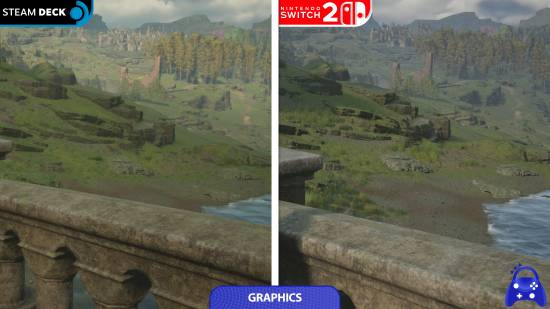In the ever – competitive handheld gaming market, two highly anticipated devices are set to take center stage: the Switch 2 and the Valve handheld. Gamers around the world are eager to see how these two powerhouses stack up against each other in terms of performance and battery life.
Performance Comparison
The Switch 2 is expected to be a significant upgrade from its predecessor. Nintendo has been tight – lipped about the exact specifications, but industry insiders speculate that it will feature a more powerful processor and improved graphics capabilities. This could mean smoother gameplay, higher – resolution textures, and more detailed environments in games. For example, open – world games on the Switch 2 might look even more stunning, with less pop – in and better overall visual fidelity.
On the other hand, the Valve handheld, which has already made a name for itself in the market, is known for its ability to run a wide range of PC games. It is equipped with a custom – built AMD APU that offers decent performance for gaming. Valve has optimized its operating system, SteamOS, to work seamlessly with the hardware, allowing players to access their entire Steam library on the go. The Valve handheld can handle graphically demanding titles, such as “Cyberpunk 2077” and “The Witcher 3,” with relative ease.
When it comes to raw processing power, the Valve handheld might have an edge due to its PC – like architecture. However, the Switch 2 could shine in terms of software optimization, as Nintendo has a long history of making the most out of its hardware.
Battery Life Comparison
Battery life is a crucial factor for handheld gamers. The original Switch was criticized for its relatively short battery life, especially when playing graphically intensive games. Nintendo is likely to address this issue in the Switch 2. Rumors suggest that the new console will have a larger battery capacity and more power – efficient components, which could result in longer playtime. For instance, a single charge might be able to last for several hours of continuous gameplay, even for more demanding titles.
The Valve handheld also has its own battery life challenges. Running PC – level games on a handheld device requires a significant amount of power. While Valve has made efforts to optimize power consumption, the battery life of the Valve handheld can still vary depending on the game being played. For graphically intensive games, the battery might drain relatively quickly, but for less demanding indie titles, it can last longer.
In conclusion, both the Switch 2 and the Valve handheld have their own strengths and weaknesses in terms of performance and battery life. Gamers will need to consider their own gaming preferences, such as the types of games they play and how often they need to play on the go, when choosing between the two.
